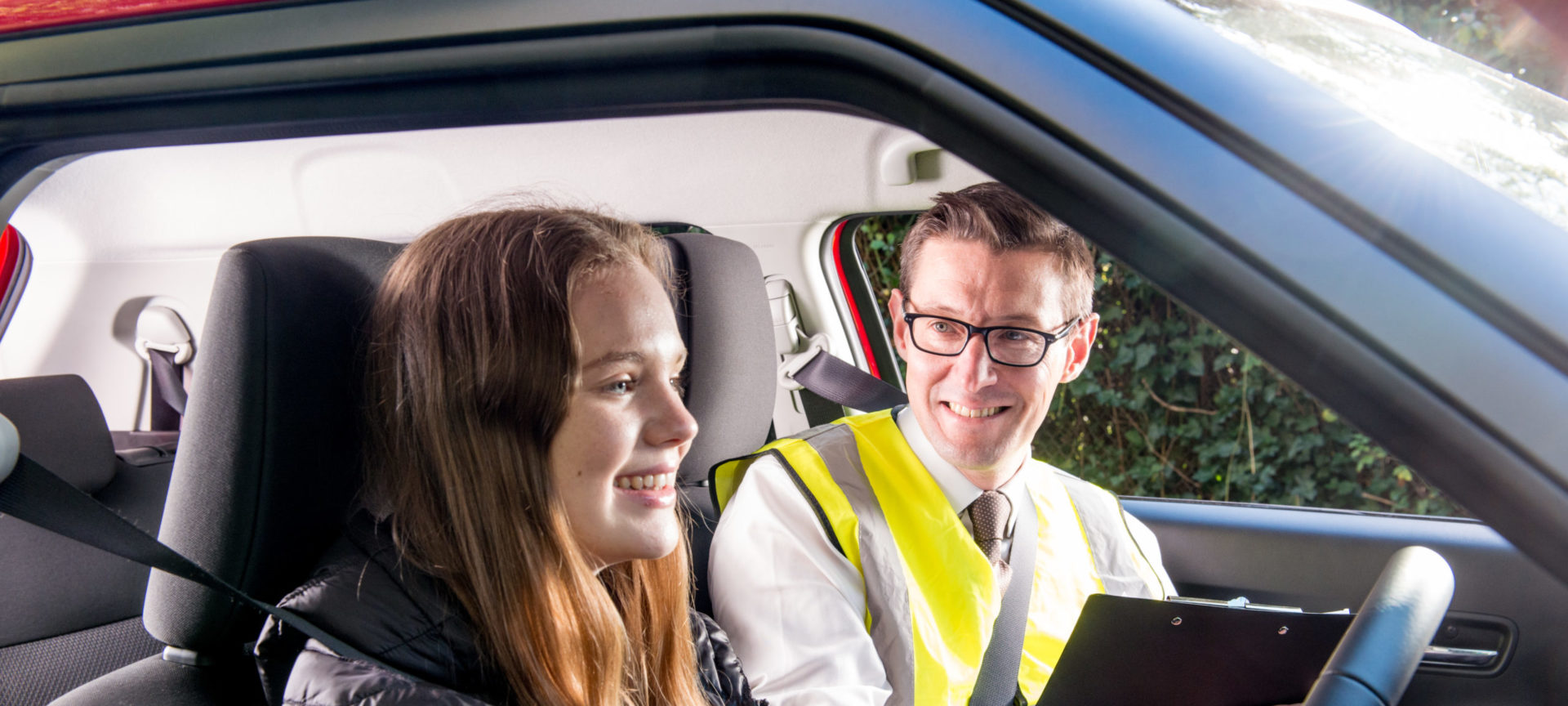We’re here to help you navigate through possibly your most daunting and liberating experience to date.
How long is the driving test?
You’ll spend around 40 minutes behind the wheel, driving on a variety of roads.
What happens before I start driving?
First of all, you’ll need to show you can see well enough to drive. That means reading a number plate from 20 metres away (or 20.5 metres if it’s an old-style number plate). If you can’t, the test will be over before it has really started, so don’t forget your contact lenses or glasses if you need them to see clearly.
You’ll also be asked a ‘tell me’ question, such as “How would you check the headlights and taillights are operating correctly?” You don’t need to make the check; just prove to the examiner that you know how it’s done. (In case this one comes up, the answer is you would turn on the switch with the ignition on if necessary, then walk around the car). If you get the ‘tell me’ question wrong you’ll have notched up a driving fault, but you won’t automatically fail the test.
‘’You’ll also need to carry out one of three reversing manoeuvres. Make sure you practise these often, so they are second nature.’’
What can I expect when I’m driving?
For 20 minutes out of the 40 you’ll be driving independently. That means following road signs or a sat nav to a destination. You won’t have to enter the destination into the sat nav – the examiner will do that for you. Don’t worry if you take a wrong turn, what’s really important is that you drive safely and legally.
You’ll be asked a ‘show me’ question while you’re driving. It could be as simple as showing how you would turn on the rear demister or wash and clean the windscreen.
As well as making a hill start, pulling out from behind a parked car, and making a normal stop at the side of the road, you may need to make an emergency stop. You’ll also need to carry out one of three reversing manoeuvres. Make sure you practise these often, so they are second nature.
How good do I need to be to pass?
You need to prove that you are safe and competent – the examiner is not expecting perfection. If you don’t feel ready for the test, contact the DVSA to put it back. But don’t delay just because you are feeling nervous – that’s normal!
What happens after the test?
Whether you have passed or failed, the examiner will talk you through any faults. If you made the grade, you’ll be given a pass certificate. If you didn’t pass and you’re feeling really down, it may be better to have your instructor drive you home. But let’s hope you pass!


